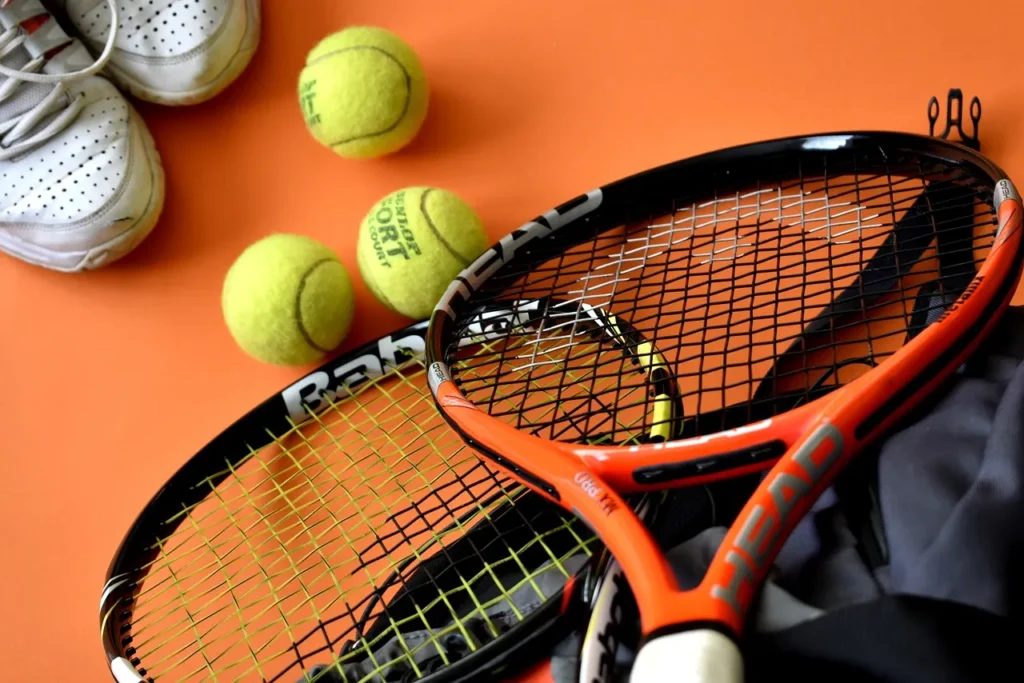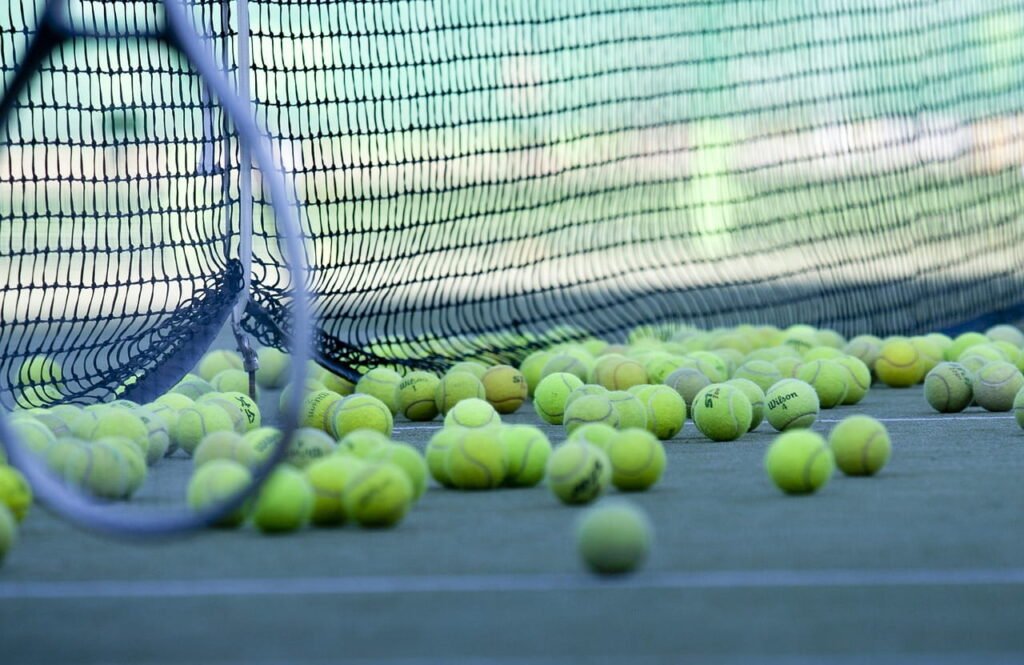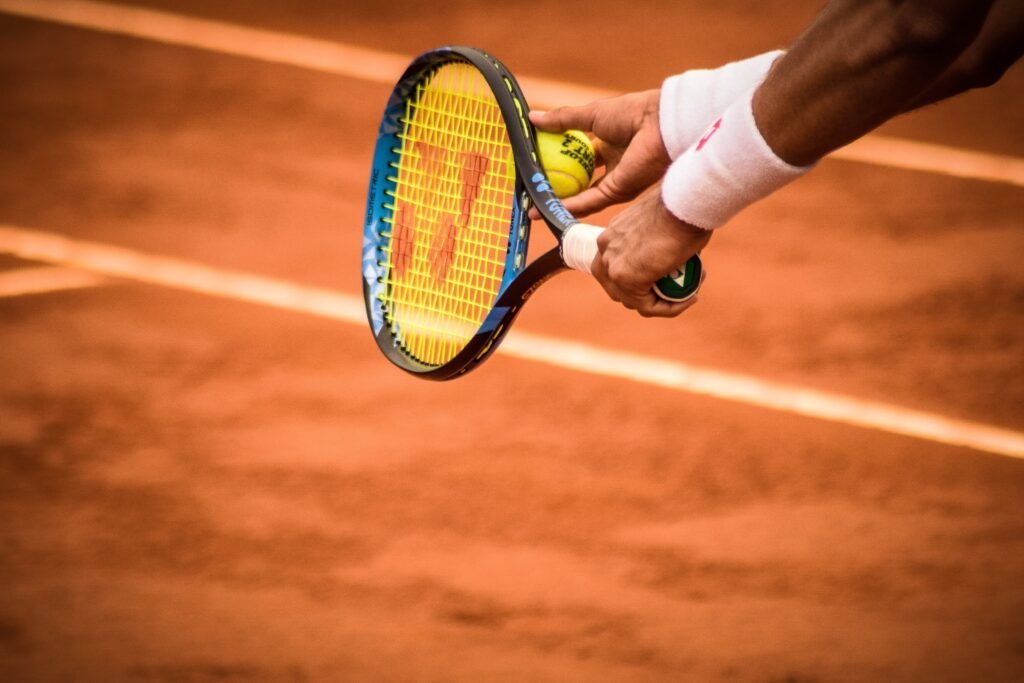Tennis Ball Colors
Tennis ball colors play an essential role in the game, serving both practical and aesthetic purposes. The most common color you’ll find on tennis courts worldwide is yellow.
Yellow tennis balls
Yellow tennis balls are the standard for professional and recreational play. This color was adopted to enhance visibility for players and spectators alike.
The bright yellow hue stands out against various court surfaces, making it easier to track the ball’s movement during fast-paced rallies. However, yellow isn’t the only color you might come across in the world of tennis.
Green tennis balls
Green tennis balls are often used on clay courts or grass surfaces. Clay courts have a unique red or rusty orange appearance due to the crushed brick surface they’re made of.
To contrast with this background, green balls were introduced to provide better visibility while maintaining a harmonious tone with the court.
Red tennis balls
Red tennis balls are commonly used in junior tennis programs or for beginners learning how to play the sport.
These balls have a lower compression level than regular ones, allowing them to bounce at a slower pace and lower height. The purpose of using red balls is to enable young players to develop their skills gradually without feeling overwhelmed by the speed and power of a regular ball.
Orange tennis ball
These are typically used in transitional stages between beginner and advanced levels of play, often referred to as “orange stage” or “stage 2.” Orange balls have slightly higher compression than red ones but still offer a slower bounce compared to regular yellow ones.
They help players bridge the gap between beginner-level skills and full-court action. There are white tennis balls that resemble their cricket counterparts more closely than typical tennis balls do.
White balls
White balls are mainly used in professional tournaments held on grass courts like Wimbledon. The choice of white comes from tradition rather than practicality since white complements the pristine green surface and provides excellent visibility for players against this specific backdrop.
Additionally, white balls add a touch of elegance to prestigious grass court tournaments. The choice of color in tennis balls combines functionality with visual appeal, ensuring that the game remains enjoyable and accessible to players of all levels.
Numbers On A Tennis Ball

When it comes to tennis balls, the numbers imprinted on them actually serve a specific purpose. You might have noticed that some tennis balls have numbers like 1, 2, or even 3 written on them. These numbers indicate the quality or type of ball being used.
The number “1” ball is typically found on professional-grade tennis balls.
These balls are designed for high-level tournaments and are made with the highest quality materials to meet the rigorous demands of professional players. They provide exceptional performance, durability, and consistency in their bounce.
Number “2” balls- these tennis balls are usually used in recreational or club-level play. They are a step down from professional-grade balls in terms of quality but still offer decent performance for regular gameplay.
These balls may be slightly less durable and may not maintain their bounce as well over time compared to number “1” tennis balls.
Number “3” tennis balls, which are commonly referred to as practice or beginner level balls.
These are perfect for players who are just starting out or for use during practice sessions. Number “3” tennis balls often have a softer feel and a lower internal pressure to provide more control and easier playability for beginners.
It’s worth noting that these numbers primarily indicate the intended level of play rather than any specific technical measurements. Additionally, it’s always essential to check with your respective tournament organizers or coaches before using any specific numbered ball for official matches.
Understanding the significance of the numbers imprinted on tennis balls can help you choose the right ball according to your skill level and playing requirements. So next time you pick up a ball with a number on it, you’ll know exactly what it represents!



